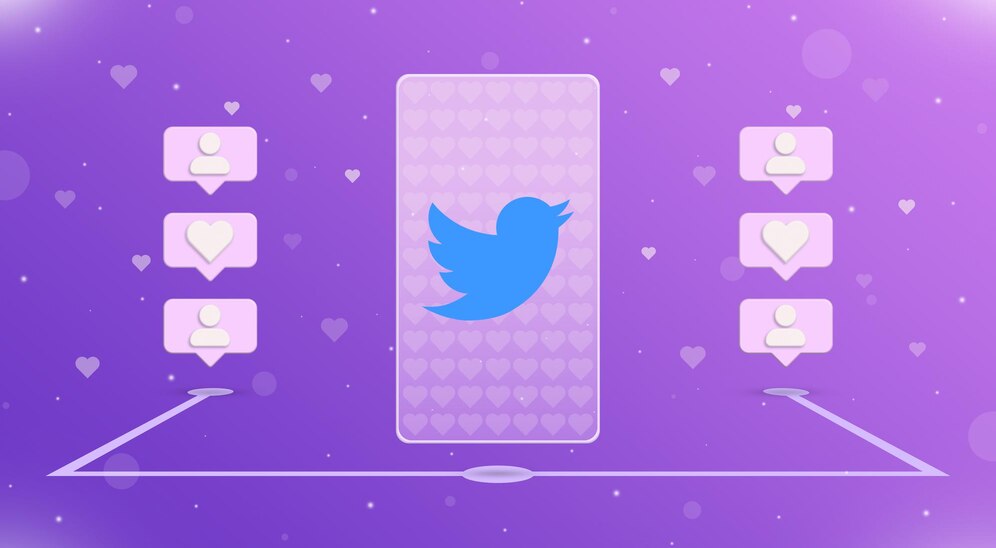In the fast-paced world of social media marketing, standing out from the crowd is crucial. With billions of users scrolling through their feeds daily, capturing attention and engaging your audience can be challenging. This is where emojis come into play. Once considered a novelty in digital communication, emojis have now become an integral part of our online language. They add a layer of emotion and personality to our messages, making them more relatable and engaging.
But as with any tool in marketing, there are right and wrong ways to use emojis. This article aims to guide you through the dos and don’ts of using emojis in social media marketing. We’ll explore how these small icons can significantly impact your brand’s engagement and reach, and provide you with practical tips on using them effectively.
So, whether you’re a seasoned marketer looking to freshen up your strategy or a newbie trying to navigate the social media landscape, this article will provide you with valuable insights. By the end, you’ll understand how to harness the power of emojis to enhance your social media marketing efforts without falling into common pitfalls. Let’s dive into the colourful world of emojis and discover how these tiny symbols can make a big difference in your marketing strategy.

The Power of Emojis in Social Media Marketing
Emojis are more than just cute little icons; they are powerful tools that can enhance your social media marketing in several ways. First and foremost, emojis create an emotional connection with your audience. They convey feelings and tones that words alone sometimes can’t, making your messages more engaging and relatable. For instance, a simple smiley face can transform a plain text into a friendly and welcoming message, while a thumbs-up emoji can reinforce approval or agreement.
Moreover, emojis simplify communication by adding visual elements to your text. They can quickly convey complex ideas and emotions, reducing the need for lengthy explanations. This is particularly valuable in the fast-paced world of social media, where brevity is key. A well-placed emoji can replace several words, making your messages more concise and easier to read.
Another significant advantage of using emojis is that they enhance your brand personality. In a sea of faceless corporate accounts, using emojis can humanise your brand, making it more approachable and relatable. Emojis show that your brand has a sense of humour and understands modern communication trends. This relatability can lead to increased engagement and loyalty from your audience.
In essence, emojis are a bridge between text and visual communication. They enrich your content, making it more dynamic and engaging. However, to reap these benefits, it’s essential to use emojis correctly and strategically, which brings us to the dos and don’ts of emoji use in social media marketing.
Also, Read – How to Leverage LinkedIn for B2B Marketing
Dos of Using Emojis in Social Media Marketing
Understand Your Audience
Knowing your audience is the cornerstone of any successful marketing strategy, and the use of emojis is no exception. Different demographics interpret and appreciate emojis differently. For instance, younger audiences might be more receptive to a wide range of emojis, while older demographics might prefer a more conservative approach. Researching your audience’s preferences and behaviours can help you tailor your emoji use to fit their expectations.
Additionally, consider cultural differences when using emojis. An emoji that is popular in one culture might be misunderstood or even offensive in another. Therefore, always ensure that the emojis you choose resonate well with your target audience and are culturally appropriate.
Keep It Relevant
Emojis should complement your content and reinforce your message. Irrelevant or excessive emoji use can dilute your message and confuse your audience. Before adding an emoji, ask yourself if it adds value to your post. Does it enhance the meaning or tone of your message? Does it align with your brand’s voice and the content’s context?
For instance, if you’re posting about a summer sale, using sun, beach, or ice cream emojis can make your post more appealing and relevant. However, using random or unrelated emojis can make your brand appear unprofessional and unfocused.
Enhance Visual Appeal
One of the significant advantages of emojis is their ability to break up text and add visual interest to your posts. Large blocks of text can be daunting and uninviting on social media. Strategically placing emojis can make your posts more readable and engaging. They act as visual cues, guiding your audience through your content and emphasising key points.
For example, bullet points or lists can be made more appealing by using relevant emojis as markers. Emojis can also highlight calls to action, making them stand out more effectively than plain text.
Test and Analyse
The effectiveness of emojis in your social media strategy can vary, and what works for one brand might not work for another. Therefore, it’s essential to experiment with different emojis and track their performance. Use social media analytics tools to measure engagement rates on posts with and without emojis. Pay attention to metrics like likes, shares, comments, and click-through rates.
Based on your findings, refine your emoji strategy. If certain emojis resonate well with your audience, use them more frequently. Conversely, if some emojis don’t perform as expected, consider phasing them out. Continuous testing and analysis will help you optimise your emoji use for maximum impact.
Also, Read – Mastering Facebook Ads: A Comprehensive Guide for Business Success
Stay Updated with Trends
Emojis are constantly evolving, with new icons being added regularly to reflect changing trends and cultural phenomena. Staying updated with these changes can keep your content fresh and relevant. For instance, the introduction of new emojis related to current events or popular culture can be an opportunity to engage with your audience in a timely and relatable manner.
Follow social media and tech news to stay informed about new emoji releases and trends. Incorporating the latest emojis into your posts can show that your brand is up-to-date and in tune with contemporary digital communication.
Don’ts of Using Emojis in Social Media Marketing
Avoid Misinterpretation
Emojis can be interpreted differently depending on cultural context, age, and personal experience. An emoji that seems harmless to you might carry a completely different meaning to someone else. To avoid misinterpretation, it’s crucial to understand the cultural and contextual nuances of the emojis you use.
For example, the folded hands emoji can be interpreted as a prayer gesture in some cultures, while in others, it might be seen as a high-five. Misunderstandings can damage your brand’s reputation and alienate your audience. Therefore, always double-check the meaning of emojis and consider their potential interpretations before including them in your posts.
Don’t Overdo It
While emojis can enhance your content, overusing them can have the opposite effect. Bombarding your audience with too many emojis can make your posts look cluttered and unprofessional. It can also overwhelm your message, making it harder for your audience to understand the core of what you’re trying to convey.
A good rule of thumb is to use emojis sparingly and strategically. Ensure that each emoji serves a purpose and adds value to your post. Strive for a balance between visual appeal and clarity, maintaining a professional image while being engaging.

Avoid Inappropriate Emojis
Some emojis can be easily misinterpreted or deemed inappropriate depending on the context. It’s essential to avoid emojis that could potentially offend or confuse your audience. For instance, using emojis with ambiguous or dual meanings can lead to misunderstandings.
Before using an emoji, consider its potential interpretations and whether it aligns with your brand’s values and message. Steer clear of emojis that could be seen as suggestive, offensive, or insensitive. Your goal should be to engage and connect with your audience positively and inclusively.
Also, Read – The Impact of Chatbots on Customer Service and Marketing
Don’t Rely Solely on Emojis
Emojis should complement your text, not replace it. While they can enhance your message, they shouldn’t be the sole means of communication. Relying entirely on emojis can make your posts ambiguous and difficult to understand.
Ensure that your core message is clear and comprehensible without emojis. Use emojis to add emphasis or convey tone, but always provide enough textual content to ensure your message is understood. Remember, not all users interpret emojis the same way, so clarity in your text is paramount.
Case Studies of Effective Emoji Use in Marketing
Several brands have successfully integrated emojis into their social media marketing strategies, achieving remarkable results. For example, Domino’s Pizza launched a campaign allowing customers to order pizzas by tweeting the pizza emoji. This innovative approach not only simplified the ordering process but also generated significant buzz and engagement on social media.
Similarly, the World Wildlife Fund (WWF) used emojis in their #EndangeredEmoji campaign to raise awareness about endangered species. By associating specific emojis with endangered animals, WWF effectively conveyed their message in a visually appealing and memorable way.
These case studies highlight the potential of emojis to drive engagement and create impactful marketing campaigns. By creatively and thoughtfully incorporating emojis, brands can capture their audience’s attention and convey their message effectively.
Tools and Resources for Emoji Use in Marketing
To optimise your emoji use, several tools and resources can be invaluable. Emoji keyboards and libraries, such as Emojipedia, provide a comprehensive collection of emojis, including their meanings and usage contexts. These resources can help you choose the right emojis for your posts and understand their potential interpretations.
Additionally, social media analytics tools like Hootsuite, Sprout Social, and Buffer can track the performance of your emoji-inclusive posts. These tools provide insights into engagement metrics, helping you refine your emoji strategy based on data-driven results.
Conclusion
Incorporating emojis into your social media marketing strategy can significantly enhance engagement and communication. By understanding your audience, keeping emoji use relevant, enhancing visual appeal, testing and analysing performance, and staying updated with trends, you can leverage the power of emojis effectively. Conversely, avoiding misinterpretation, not overdoing it, steering clear of inappropriate emojis, and not relying solely on emojis will help you maintain a professional and engaging social media presence.
Emojis, when used thoughtfully and strategically, can transform your social media marketing, making your brand more relatable and dynamic. Embrace the colourful world of emojis and watch your social media engagement soar.
FAQs
What are the benefits of using emojis in social media marketing?
Emojis add emotional depth, enhance engagement, and make your brand more relatable. They simplify communication and can make your content more visually appealing.
Can emojis improve engagement on social media?
Yes, emojis can significantly boost engagement by making your posts more engaging and visually appealing. They help convey emotions and tones that words alone might not fully capture.
How can I ensure my use of emojis is appropriate?
Research your audience and consider cultural differences. Use emojis that align with your brand’s message and values, and avoid emojis that could be misinterpreted or deemed inappropriate.
What are some common mistakes to avoid when using emojis?
Common mistakes include overusing emojis, using irrelevant or inappropriate emojis, and relying solely on emojis without sufficient textual content.
Are there any tools to help me use emojis effectively?
Yes, tools like Emojipedia provide comprehensive emoji libraries, and social media analytics tools like Hootsuite and Sprout Social can track emoji performance.
How often should I use emojis in my posts?
The frequency of emoji use depends on your audience and brand voice. Use them strategically to enhance your message without overwhelming your audience.
Can emojis be used in professional or B2B marketing?
Yes, emojis can be used in professional or B2B marketing if used thoughtfully. They can humanise your brand and make your communication more engaging, provided they align with your brand’s tone and message.

